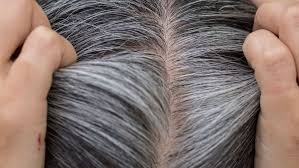Stop Hair Loss and Premature Graying: Barbara O'Neill's Secrets
Discover the true causes of hair loss and premature graying, according to Barbara O'Neill. Find natural solutions for healthy, luscious hair.
HEALTHBLOG-LIST
1/18/20252 min read


Do you dream of thick, shiny, and vibrant hair? Hair loss, premature graying, and lack of volume are common concerns, but solutions exist! Barbara O'Neill, a natural health expert, reveals the secrets to luscious hair. In this article, we will explore the root causes of these hair problems, the symptoms to watch out for, and effective treatments to regain the hair of your dreams.
Table of Contents
The Hidden Causes of Hair Loss and Gray Hair
Identifying the Symptoms
Barbara O'Neill's Natural Solutions
Tips for Healthy, Radiant Hair
FAQ
Conclusion
In Short
Hair loss and gray hair can be caused by internal and external factors.
A balanced diet, stress management, and proper hair care are essential.
Barbara O'Neill advocates natural solutions to stimulate hair growth and pigmentation.
The Hidden Causes of Hair Loss and Gray Hair
According to Barbara O'Neill, hair loss and premature graying are often a reflection of an internal imbalance.
Nutritional deficiencies: A lack of vitamins (B, D, E), minerals (iron, zinc), and essential fatty acids can weaken hair and disrupt its growth cycle.
Stress and hormonal imbalance: Chronic stress, hormonal fluctuations (menopause, pregnancy), and certain diseases (thyroid) can influence hair health.
Genetic factors: Heredity plays a role in predisposition to baldness and early graying.
External aggressions: Excessive use of chemicals (hair dyes, perms), heat styling tools (hair dryers, straighteners), and sun exposure can damage hair.
Identifying the Symptoms
Excessive hair loss: Losing more than 100 hairs per day can be a sign of abnormal hair loss.
Thinning hair: Hair becomes thinner, less dense, and the scalp is more visible.
Premature graying: White hairs appear before the "normal" age (generally after 35 years old).
Dull and brittle hair: Hair lacks shine, is dry, and breaks easily.
Barbara O'Neill's Natural Solutions
Barbara O'Neill favors a holistic approach to fight hair loss and gray hair. She recommends:
A nutrient-rich diet: Consume foods rich in vitamins, minerals, and antioxidants (fruits, vegetables, protein, oily fish).
Stress management: Practice relaxation techniques (yoga, meditation) to reduce stress and promote hormonal balance.
Natural hair care: Use gentle, sulfate-free shampoos, nourishing masks based on vegetable oils (coconut, argan, castor), and stimulating lotions with rosemary or sage.
Food supplements: In case of deficiencies, food supplements can be helpful (biotin, zinc, silicon).
Tips for Healthy, Radiant Hair
Massage your scalp: Massage stimulates blood circulation and promotes hair growth.
Space out shampoos: Wash your hair 2 to 3 times a week to preserve its natural hydration.
Avoid heat styling tools: Let your hair air dry as much as possible and limit the use of hair dryers and straighteners.
Protect your hair from the sun: Wear a hat or cap during prolonged sun exposure.
Trim your ends regularly: This helps eliminate split ends and promote growth.
FAQ
Q: At what age does hair start to turn gray?
A: The graying process varies from person to person, but it usually starts after age 35.
Q: Can stress really cause hair loss?
A: Yes, chronic stress can disrupt the hair growth cycle and lead to excessive hair loss.
Q: What are the best foods for healthy hair?
A: Foods rich in protein, iron, zinc, B vitamins, and essential fatty acids are particularly beneficial for hair.
Conclusion
Hair loss and premature gray hair can be a source of insecurity, but by adopting a holistic approach and following Barbara O'Neill's advice, it is possible to regain healthy and luscious hair. Remember that patience and consistency are key to achieving lasting results.
Feel free to share your own tips and experiences in the comments below!
Note: This blog post is fictional and inspired by Barbara O'Neill's general principles of natural health. It is not a substitute for medical advice.
